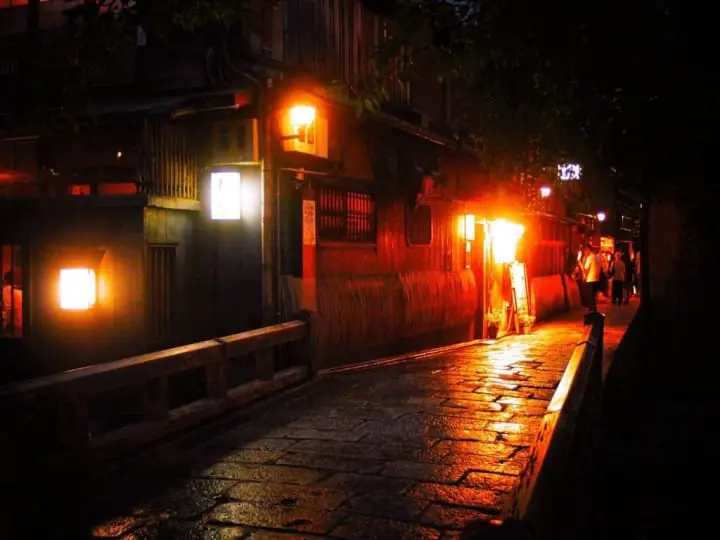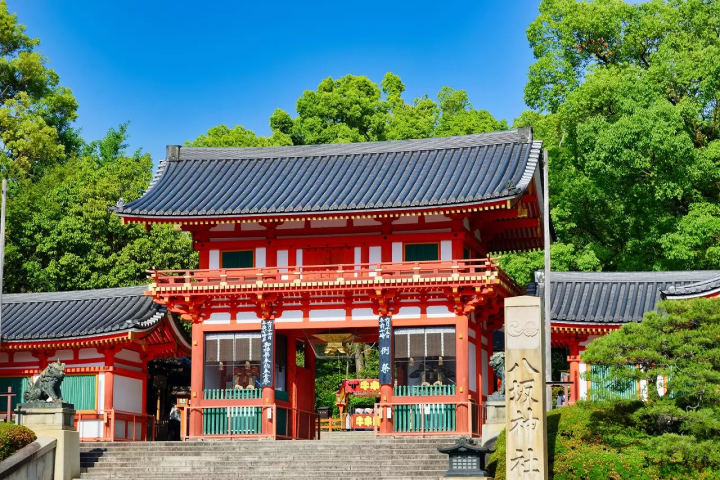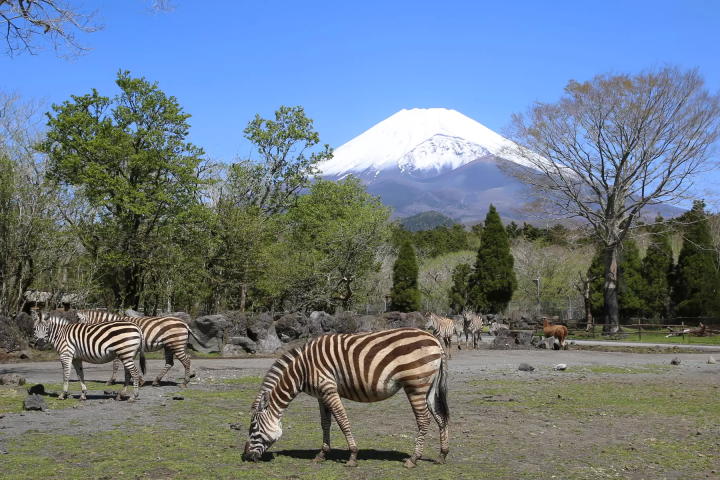Gion Kyoto: Explore the Historic Geisha District by Night

Kyoto's Gion has been the foremost entertainment district in Japan since ancient days. By day it bustles with visitors but at night these streets look completely different. Let's visit Gion at night.
Gion - Discover the Lively Traditional Side of Kyoto

The Gion area of Kyoto is the foremost place to get a taste of Japan. With its streets lined with old wooden buildings, Gion is visited not only by domestic tourists but also by visitors from all over the world.
Today we would like to introduce to you the magical world of Gion at night.
Gion, Kyoto's Iconic Entertainment District

Gion is the best-known entertainment quarter in Kyoto. Originally it prospered as the monzencho (*1) of Yasaka Shrine (formerly called Gion-sha). It gradually developed into a town full of restaurants, high-class ryotei (Japanese restaurants), and entertainment facilities.
The extent of what can be called the Gion area is quite large. On the eastern end there is Yasaka Shrine and if you go 500 meters in the completely opposite direction, you'll come across Kamo River on the western end.
The north and south range is also about 500 meters. On the southern end is Kenninji Temple and the northern end spreads out to around Shinbashidori Avenue.
*1 Monzencho: a town centered around a large temple or shrine with many shops and restaurants opened here to serve the pilgrims who came to worship at the temple/shrine.

In a town such as Gion, which prospered as an entertainment district, there are many institutions from long ago that are now known as amusement or cultural facilities. For example, the Kabuki theater Kyoto Shijo Mimamiza and the Gion Kobukaburenjo where Japanese traditional dances are performed are two such amusement facilities.
In addition, if you go to the restaurants in the area, you can see maiko (apprentice geisha) walking around town to announce dances and upcoming performances.
A Walk around Gion at Night
Just looking at the intricate latticework of these doors already makes you feel that you've fallen back in time here in Gion. Once it gets dark, the townscape of Gion shows a different kind of beauty.
Now, we'll introduce to you to Hanamikojidori and Shinbashidori where you can see the magical night sights of Gion.

First is Hanamikojidori, the main street that passes through the center of Gion.

Hanamikoji is split into north and south by the intersecting Shijodori. This results in a completely different atmosphere on the north and south side. The north side has many izakaya or Japanese-style pubs whereas the south side has mainly historical and traditional-style restaurants.
Lanterns that are dimly lit create a dreamy scenery that spreads out ahead of you; it is an entirely different Gion from that of the day.

Next up is the street called Shinbashidori. It has a slightly more relaxed atmosphere than Hanamikoji.

Along Shinbashidori you will find a small shrine called Tatsumi Jinja. Also known as the "Home of the Gods of Gion's Harvest", this Inari shrine is where authorized apprentice geisha begin their public appearances. This particular shrine was built originally to protect the Tatsumi direction (southeast) from bad luck.
A short distance from the street there is a narrow alley with okonomiyaki and teppanyaki restaurants. Of the many shops here, there are great ranges in price from the moderate to the expensive, all to suit the needs of the customers who make their way here.

On warm days, it's quite lovely to sit by the river enjoying the cool breeze as you listen to the water as it murmurs by. The scenery around the riverside is most beautiful when the sun has just started to go down.
The Rules of Gion
There are of course rules to be followed here in Gion so that everyone can fully enjoy their time in this historical area.

All over this district, there are signs with simple pictures that even children can easily understand.
No littering, no eating/drinking/smoking, and, the newest addition, no selfie sticks. These are all very obvious manner to be followed.
Please also remember that you may not touch the maiko or geisha, nor should you sit on the road or lean against any of the buildings or fences. Be careful and use common sense when sightseeing.
Enjoying Gion
On summer nights, the temperature in Gion drops and it becomes very breezy and quite comfortable.

Once it becomes night time, there are fewer people in the usually very lively Gion. You can hear the sounds of nature that are muffled during the day. How about experiencing a calm side of Kyoto and the Gion atmosphere that you can't see during the day?
FAQ
What is Gion known for?
Gion, a district in Kyoto, Japan, is renowned for its traditional architecture, preservation of tea houses, fine dining establishments, and association with geisha culture. It stands out as one of Japan's prominent geisha districts, offering visitors a glimpse into the world of geiko and maiko through performances like the Miyako Odori and encounters with these traditional entertainers on its historic streets, notably along Hanami-koji. Gion's charm lies in its well-preserved machiya houses, exclusive tea houses, and a culinary scene that reflects Kyoto's traditional gastronomy, making it a cultural treasure that epitomizes Japan's rich heritage and geisha traditions.
Is it worth visiting Gion?
Visiting Gion in Kyoto is definitely worth it for travelers seeking a glimpse into Japan's traditional culture and heritage. The district's historical streets, preserved tea houses, geisha culture, and elegant ambiance offer a unique experience that immerses visitors in a bygone era. Witnessing geisha and maiko, exploring the picturesque surroundings, and enjoying the authentic atmosphere of Gion can provide a profound insight into Kyoto's rich cultural tapestry. Whether it's strolling along Hanami-koji street, attending a geisha performance, or savoring traditional dining, a visit to Gion offers a memorable and culturally enriching experience that captures the essence of traditional Japan.
What time of day to visit Gion?
The best time to visit Gion in Kyoto depends on the experience you seek. Daytime visits are ideal for exploring the historic streets and architecture, while evenings offer the chance to spot geisha and maiko on their way to appointments, with lantern-lit streets creating a magical atmosphere. Nighttime visits provide a different perspective, showcasing Gion's elegance and charm under the glow of traditional lanterns. Each time of day offers a unique experience, allowing visitors to immerse themselves in the cultural richness and historical ambiance of this iconic district.
How long should I spend in Gion?
The duration of your visit to Gion in Kyoto can vary depending on your interests and availability. A short visit of 1-2 hours can offer a glimpse of the district, while a half-day visit of 3-4 hours allows for a more leisurely exploration of its main attractions. For a comprehensive experience, including cultural activities and deep immersion, consider spending a full day or more in Gion. Tailoring the length of your visit to your preferences ensures you can fully appreciate the historical charm and cultural richness of this renowned district in Kyoto.
What is the most famous street in Gion?
The most famous street in Gion, Kyoto, is Hanami-koji. Hanami-koji is a picturesque and historic street lined with traditional wooden machiya houses, tea houses, and exclusive restaurants. This charming cobblestone street is renowned for its atmospheric setting and is one of the main thoroughfares in Gion where visitors can often catch a glimpse of geisha and maiko on their way to appointments. Hanami-koji is synonymous with the elegant and traditional ambiance of Gion and is a must-visit destination for those seeking to immerse themselves in Kyoto's geisha culture and historic charm.
How to spot geisha in Gion?
Spotting geisha in Gion, Kyoto, is a special experience that requires patience, respect, and a bit of luck. To increase your chances of seeing geisha or maiko in Gion, visit in the evening when they are likely moving between engagements, explore Hanami-koji street where they often walk, and attend public events or cultural experiences where they may perform or be present. Being discreet and respectful is essential to observing these professionals in their work without interrupting their routines. Booking a tea house experience in Gion can also provide a more structured way to see geisha and maiko up close while learning about their traditional customs and practices. On the other hand, there is now a museum in Gion where you can meet maiko and geisha and even take photos together with them: the Gion Kagai Art Museum. Do consider visiting this facility for deeper insights into Kyoto's geisha culture.
Gion
Address: Kyoto, Higashiyama, Gion MAP
Nearest Station: Gionshijo Station on Keihan line, Kawaramachi Station on Hankyu Line
Access: 1 minute walk from Gionshijo Station, 5 minute walk from Kawaramachi
Phone Number: 075-531-2288 (Promotion Association - Japanese only)
Website: Gion Shopping Street Promotion Association (Japanese only)
関西在住のオタク。「わたしと みんなと 楽しめる記事を」 そんな記事を提供できればと思います。













































![[Reopening in March 2026] Ikoma Sanjo Amusement Park Park, 45 minutes from Osaka , with free admission](https://resources.matcha-jp.com/resize/720x2000/2024/08/28-194409.webp)
![[Gunma] 5 recommended gourmet foods at Kawaba Denen Plaza Roadside Station!](https://resources.matcha-jp.com/resize/720x2000/2025/02/26-225970.webp)
![[Kanazawa] Enjoy the world of gold leaf to the fullest in the city with the highest production volume in Japan](https://resources.matcha-jp.com/resize/720x2000/2025/11/12-249564.webp)
![[2026] Family Winter Trip to Suzuka Circuit! – For Both Day trips and Overnight Stays!](https://resources.matcha-jp.com/resize/720x2000/2025/12/26-254097.webp)
